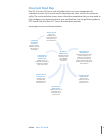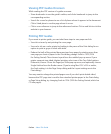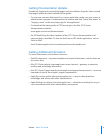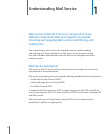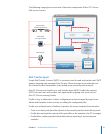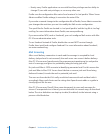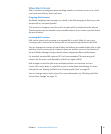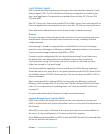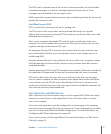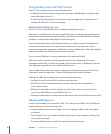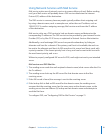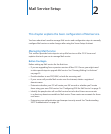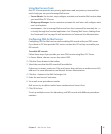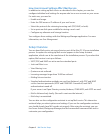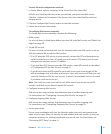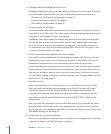
Chapter 1 Understanding Mail Service 17
The IMAP user’s computer can ask the server for message headers, ask for the bodies
of specied messages, or search for messages that meet certain criteria. These
messages are downloaded as the user opens them.
IMAP connections are persistent and remain open, maintaining load on the server and
possibly the network as well.
Post Oce Protocol (POP)
POP is used only for receiving mail, not for sending mail.
The POP service is like a post oce, storing mail and delivering it to a specic
address. Mail service stores incoming POP mail until users connect to Mail service and
download their waiting mail.
After a user’s computer downloads POP mail, the mail is stored only on the user’s
computer. The user’s computer disconnects from Mail service, and the user can read,
organize, and reply to the received POP mail.
An advantage of using POP is that your server doesn’t need to store mail that users
have downloaded. Therefore, your server doesn’t need as much storage space as it
would using IMAP.
However, because the mail is removed from the server, if the user’s computer sustains
hard disk damage and loses mail les, there’s no way to recover these les without
using data backups.
Another advantage of POP is that POP connections are transitory. After mail is transferred,
the connection is dropped and the load on the network and mail server is removed.
POP isn’t the best choice for users who access mail from more than one computer,
such as a home computer, an oce computer, and a laptop while on the road. When
a user retrieves mail via POP, the mail is downloaded to the user’s computer and is
usually removed from the server. If the user logs in later from a dierent computer, the
user can’t see previously downloaded mail.
User Interaction with Mail Service
Mail is delivered to its nal recipient using a mail user agent (MUA). MUAs are usually
referred to as mail clients or mail applications. These mail clients often run on the
user’s local computer.
Each user’s mail application must be congured to send messages to the outgoing
server and receive messages from the incoming server. These congurations can aect
your server’s processing load and available storage space. For more information, see
“Conguring Mail Client Applications” on page 60.
Users can also access mail through Webmail. For more information, see “Mail Service
Filtering” on page 35.



